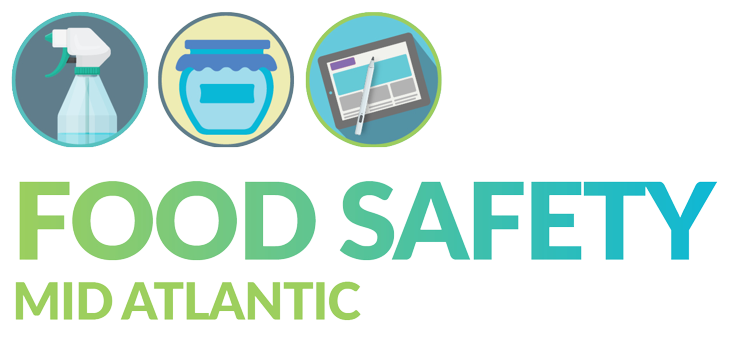SOPs are the core of your food safety plan for your food manufacturing process. Learn how to create strong SOPs.
Category: Food Safety
A Strong Recall Plan is a Food Business’s Best Friend
Recalls are inevitable, but they don’t have to be a death sentence for your food business. A strong recall plan will mean that you can avoid panic and have a well managed food recall.
Make the Most of Harvest Season with Safe Food Preservation!
Food preservation allows you to make the most of harvest season. Practice proper food safety when canning, drying, and freezing to have safe, local food all year round.
Scaling up your food production? Have you identified your food safety ‘what ifs’?
If food safety is the process of ensuring that our food does not harm us in the short term, then how do we figure out those potential locations of harm? Especially when scaling up, knowing the answers to your ‘what ifs’ is a critical piece of the the food safety puzzle.
HACCP vs Food Safety? Find the right plan for your business
A proper food safety plan is necessary for business growth and success. Determining whether you need HACCP or a Food Safety Plan shouldn’t stop you from taking that next step. Let us show you how to determine what you need.
Lack of Resilience in the Food System
Farmworkers’ rights, CAFOs, and acres of monocropping fresh produce is an indication of how unnaturally we grow mass produce food and causes foodborne illness.
What If
The one question I am always asking myself when I am writing food safety plans for my clients “What If?”: What if the temperature isn’t exactly at 165 F when cooking chicken? What if the sanitizer concentration is slightly less than the manufacturer recommends? What if the food safety plan is only followed for every other batch? What if colleagues turn up to work unwell? And I worry. I worry about two things mostly: My client’s customers and consumers My client. Customers and Consumers Imagine: a child or an older adult having Salmonella from undercooked chicken I am a food consumer and I am assuming you are one too! We all eat and, unless we are completely living off the grid, we buy food and food ingredients. We assume that food is safe for us to eat. Thus, selling food comes with a huge responsibility, whether you are selling directly to consumers, through Amazon or Facebook marketplaces; or through a distributor or supermarket. Small and large food producers, cooks, and manufacturers have a responsibility to create and sell food that is the highest quality possible which includes safety. When I think about consumers, my “What If” pictures someone, possibly a child or an older adult having Salmonella from undercooked chicken, suffering anaphylaxis from eating misbranded food because the label wasn’t checked for allergens, or breaking a tooth on a piece of metal because the blades of the blender went unchecked. There are lots of stories of people who have suffered from foodborne illness in the US as they affect one in six Americans annually. As a food manufacturer or producer, how can we make sure that your product is safe and not about to become part of a foodborne illness story? Food Producers and Manufacturers Recalls are a bad way to manage food safety. I have this image in my mind of my clients undergoing a recall because they didn’t follow their food safety plan and their Good Manufacturing Practices. This happens to all food producers – I just read about Nestle recalling 381 tons of hot pockets because they contain foreign material such as glass and hard plastic. I am certain that Nestle has a very robust food safety program. Unfortunately, one consumer, that we know of, suffered minor oral injury. So what might have gone wrong? Did the X-ray machine fail? I am sure Nestle’s QA and Food Safety team are looking for the cause.. Recalls are a bad way to manage food safety. Not only are food recalls risky for the consumer, they are also costly. A typical food recall has been calculated to cost businesses $10 million in direct costs alone. That excludes costs from the loss of sales, loss of brand integrity and trust, liabilities fees, and increased insurance costs. Not to mention the cost to the people who made ill by eating contaminated food. One of the challenges with “What If” is that we don’t have enough data. We don’t know for certain what would happen if the sanitizer concentration is slightly less than it should be one day. We don’t know if we will cause a foodborne outbreak if we only check the temperature of every other batch. Should we take the risk of a recall if our X-ray machine or metal detector stops working? Due to my What Ifs, I tell my clients that they MUST NOT cut corners with food safety; to me it is just too risky. The recommendations in a food safety program are there for a reason. Which of your What Ifs are you uncertain about? Where are the potential risks in your food production processes? Book a call today so we can start working on your food safety program and making high quality, safe food for your consumers.
Food Allergen Program
A comprehensive allergen program will help prevent your business having to recall your products due to misbranding.
HARM Part 4: Hurdle Technology
We can use multiple processing techniques to reduce the risk of foodborne illness and extend the shelf life of our food.
HARM Part 3! Reduced Moisture
Part 3 of my HARM series. Find out how reducing the moisture content makes food safer. This article includes an introduction to the food scientific term of water activity!
